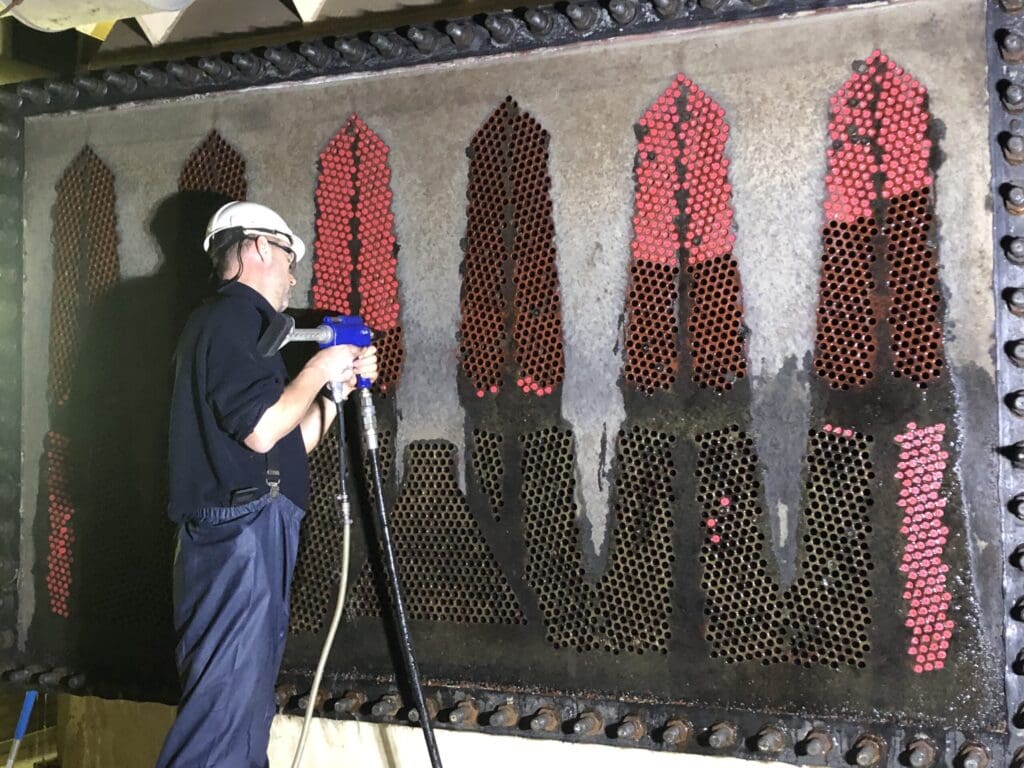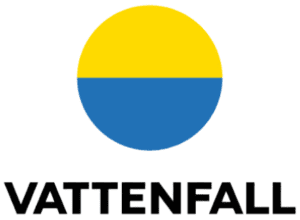
Advantages
Advantages of dart cleaning
Low pressure tube cleaning technology
Dart cleaning is an innovative method of cleaning heat exchanger and condenser tubes. Rather than using (traditional) high pressure lancing systems, dart cleaning focusses on shooting projectiles through tubes and thereby removing deposits from the tube walls. A low pressure water flush ensures that all loosened deposits are removed from the tubes while, at the same time, guaranteeing operator- and equipment safety. Furthermore, a complete cleaning requires less time, meaning shorter downtime and increased revenue for the plant. Finally, the water consumption is significantly less compared to other cleaning methods. The minimalization of waste water created during cleaning, makes this method as environmentally friendly as possible.
Eco-friendly method
No chemicals, less waste water.
When projectiles remove deposits in heat exchanger and condenser tubes, they do so by a mechanical ''scraping'' action, with no need for any chemicals. While Abalco's propulsion systems use 130 liters/minute of water, it takes only around 5 seconds to clean a tube, regardless of the length. This results in an average water use of ca. 10-15 liters per tube. Compared to other cleaning methods, this results in a significant reduction of waste water created over the course of the cleaning. Less water is used and no chemicals are introduced into the environment.
- No chemicals required to clean tubes
- Ca. 10-15 liters of water used to clean 1 tube
- Eco-friendly cleaning technology
- Significantly less waste water created per cleaning


Cost-effective technology
Good cleaning results for lower cleaning budgets.
Dart cleaning has an excellent return on investment compared to other cleaning technologies. The more tubes are cleaned, the faster the cleaning pays back for itself. It's a simple calculation, tube cleaning with projectiles in and out of itself is very affordable. Equipment can be rented on a project basis and the only thing that needs to be purchased are projectiles. While the cost of cleaning is relatively low, the real moneymaker is the decrease in downtime. Every hour that a power generation plant is not running, costs the company a tremendous amount of money. By increasing the cleaning speed, the condenser or heat exchanger can be returned to service faster.
- Excellent return on investment, even with a large number of tubes
- Affordable cleaning technology, with consumables being projectiles
- Projectiles can be used multiple times, further lowering costs
- Shorter downtime due to fast tube cleaning process



Safe for operators & equipment
Low pressure method, safer cleaning environment.
Abalco's dart cleaning systems operate at 40 bar pressure and have a flow of ca. 130 liters/minute. While 40 bar may seem high, it's very low. The pressure is needed to push the projectile through the tube. It does not build up in the tube and all energy is lost when the projectiles exit the tubes. Low pressure removes the risks of operators becoming injured during cleaning and tube walls becoming damaged. All in all, it's a very safe tube cleaning method.
- 40 bar pressure, safe for operators and equipment
- Projectiles lose nearly all energy when exiting tubes
- Less safety parameters to worry about when cleaning
- Less experienced operators can clean due to low risk



Faster cleaning, less downtime
Dart cleaning is one of the fastest tube cleaning technologies.
In today's industries, downtime can translate to substantial financial losses. Therefore, keeping the cleaning short and effective is paramount. A projectile is shot through a tube in less than 5 seconds, regardless of the length. Multiplied over a large number of tubes, this translates into a fast cleaning, especially when compared to traditional methods, such as high pressure lancing systems. By cleaning heat exchanger and condenser tubes with projectiles, equipment can be returned to full operation quicker than ever before.
- Cleaning speed ca. 5 seconds/tube, regardless of the length
- Easy-to-perform by technicians, less training required before use
- Cleaning can be performed quickly and therefore more frequently
- Increase cleaning intervals and thereby optimize equipment effiency














